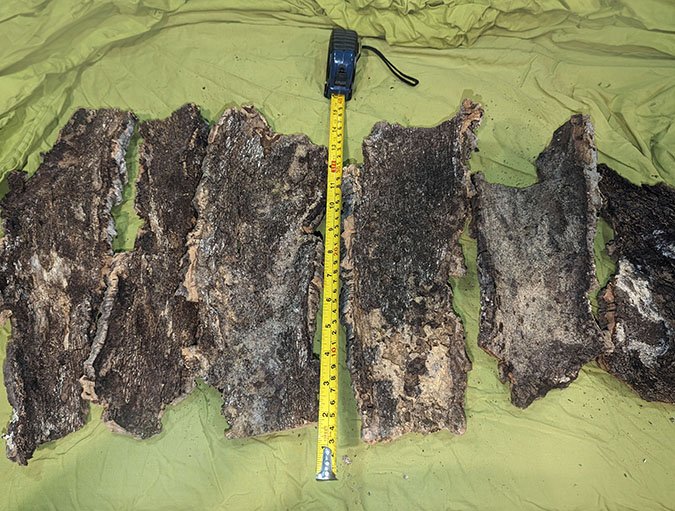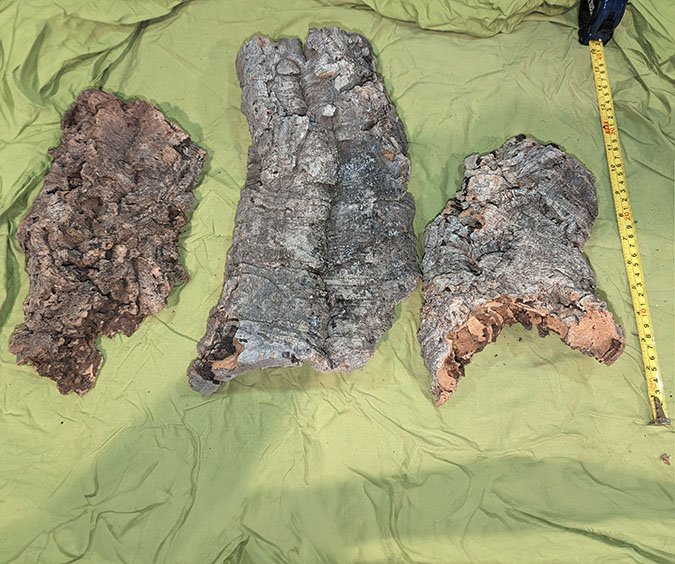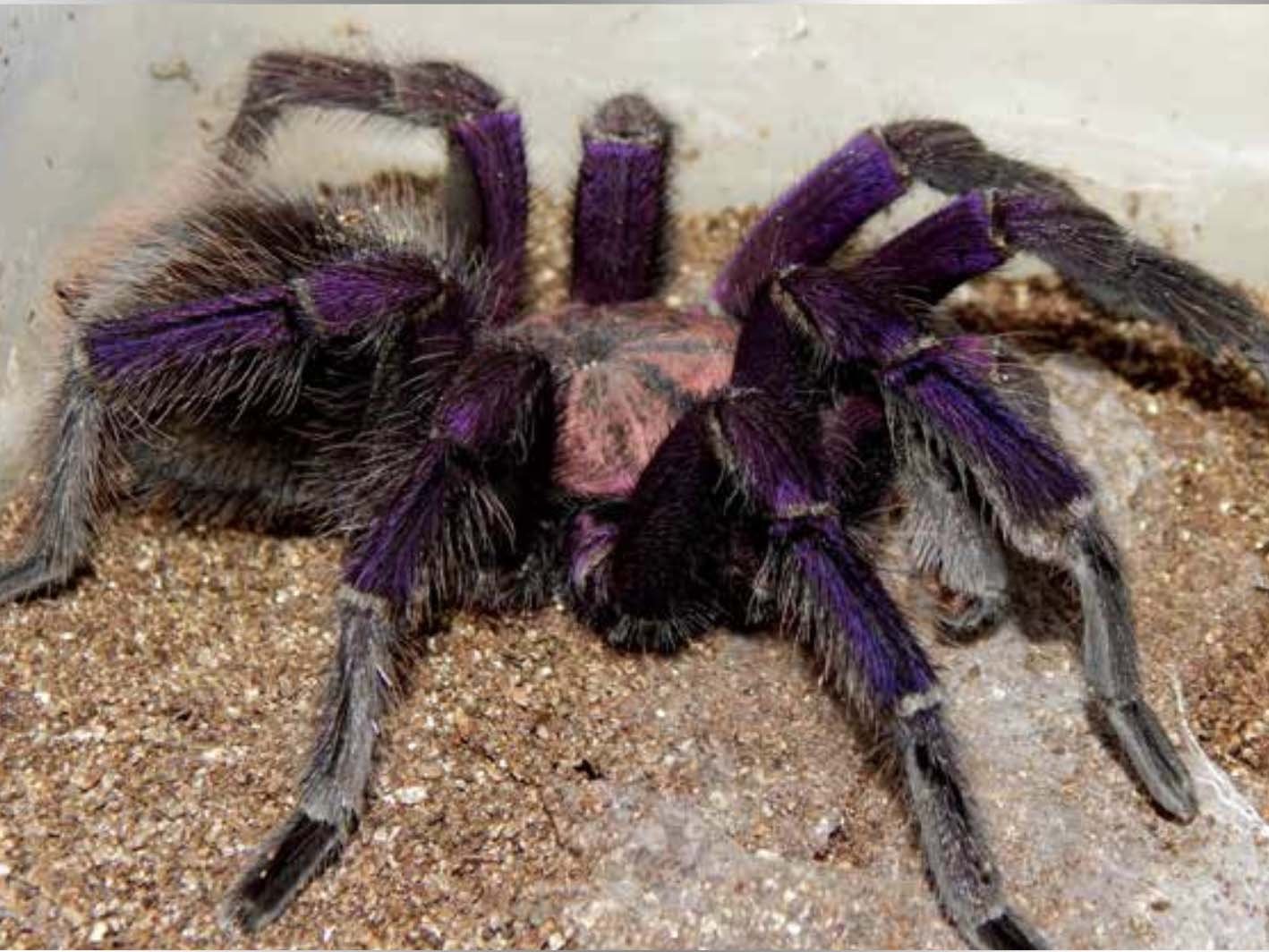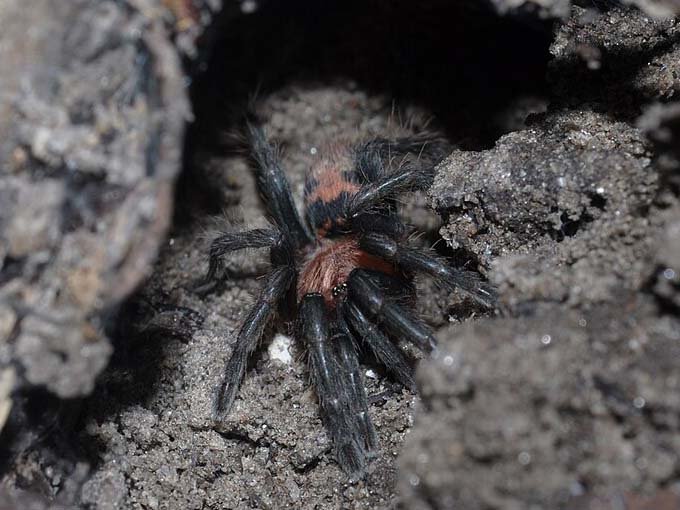Ornithoctoninae sp 'Vietnam Silver'
Ornithoctoninae sp. 'Vietnam Silver', commonly referred to as the Vietnam Silver Tarantula, is a rare and visually striking Old World fossorial species believed to inhabit the highland forests of Vietnam, particularly in cool, humid regions with dense leaf litter and thick canopy cover. Though undescribed scientifically, this member of the Ornithoctoninae subfamily is known for its metallic silver-grey coloration, which is especially vibrant after molting and may carry subtle undertones of blue, slate, or lavender depending on lighting and maturity.
Like its relatives in genera such as Ornithoctonus, Selenocosmia, and Haploclastus, the Vietnam Silver Tarantula is a fierce, fast, and reclusive fossorial predator. It spends nearly all of its life hidden in deep, silk-lined burrows, emerging only to ambush prey with lightning speed. While beautiful, it is not a beginner species—this tarantula lacks urticating hairs and relies on threat postures, powerful strikes, and medically significant venom for defense. When threatened, it displays impressive chelicerae and elevated front legs before retreating rapidly into its tunnel system.
Ornithoctoninae sp. 'Vietnam Silver', commonly referred to as the Vietnam Silver Tarantula, is a rare and visually striking Old World fossorial species believed to inhabit the highland forests of Vietnam, particularly in cool, humid regions with dense leaf litter and thick canopy cover. Though undescribed scientifically, this member of the Ornithoctoninae subfamily is known for its metallic silver-grey coloration, which is especially vibrant after molting and may carry subtle undertones of blue, slate, or lavender depending on lighting and maturity.
Like its relatives in genera such as Ornithoctonus, Selenocosmia, and Haploclastus, the Vietnam Silver Tarantula is a fierce, fast, and reclusive fossorial predator. It spends nearly all of its life hidden in deep, silk-lined burrows, emerging only to ambush prey with lightning speed. While beautiful, it is not a beginner species—this tarantula lacks urticating hairs and relies on threat postures, powerful strikes, and medically significant venom for defense. When threatened, it displays impressive chelicerae and elevated front legs before retreating rapidly into its tunnel system.


Ornithoctoninae sp. 'Vietnam Silver', commonly referred to as the Vietnam Silver Tarantula, is a rare and visually striking Old World fossorial species believed to inhabit the highland forests of Vietnam, particularly in cool, humid regions with dense leaf litter and thick canopy cover. Though undescribed scientifically, this member of the Ornithoctoninae subfamily is known for its metallic silver-grey coloration, which is especially vibrant after molting and may carry subtle undertones of blue, slate, or lavender depending on lighting and maturity.
Like its relatives in genera such as Ornithoctonus, Selenocosmia, and Haploclastus, the Vietnam Silver Tarantula is a fierce, fast, and reclusive fossorial predator. It spends nearly all of its life hidden in deep, silk-lined burrows, emerging only to ambush prey with lightning speed. While beautiful, it is not a beginner species—this tarantula lacks urticating hairs and relies on threat postures, powerful strikes, and medically significant venom for defense. When threatened, it displays impressive chelicerae and elevated front legs before retreating rapidly into its tunnel system.
What's the ideal diet for a Vietnam Silver Tarantula?
All Tarantulas can eat a variety of feeders. Stick to crickets, dubia roaches, silkworms, horned worms occasionally, and a superworm or mealworm as the occasional treat!
How should I keep a Vietnam Silver Tarantula?
For this particular creature, you can start with the Terrestrial Terrain small enclosure if under a ¼" - 1.2" Spiderling (sling). When they get to be about 1" in size, you will want to either go to the Terrestrial Terrain Medium or Terrestrial Terrain Large enclosure. Feed them as slings once a week, twice if their opisthosoma (abdomen) looks small, but if the opisthosoma is wider than their prosoma (pneumothorax) then wait a couple of days to feed. For juveniles or adults, stick to feeding once a week, nothing larger than their opisthosoma. Make sure to keep a water dish at all times full; wider and deeper is preferred.
How long could a Vietnam Silver Tarantula live?
Females are believed to live upwards of 15+ years, and males not exceeding around 4 years of age. All estimates are based on multiple sources.

















